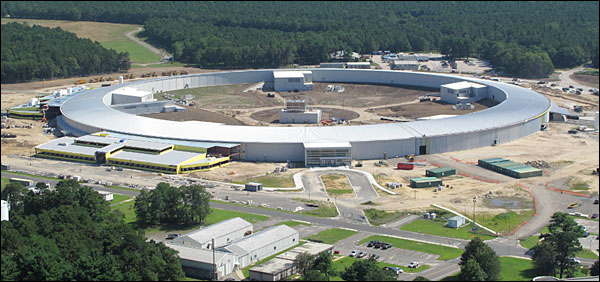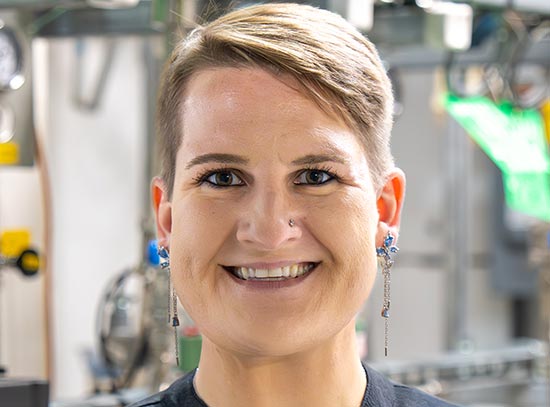Brookhaven Lab Awards $5.2 Million to New Jersey Company
Experiment Enclosures to be Built for New Light Source
September 2, 2011
UPTON, NY – The U.S. Department of Energy’s Brookhaven National Laboratory has awarded $5.2-million to a New Jersey company to build lead and steel enclosures for scientific equipment. The equipment is part of the National Synchrotron Light Source II (NSLS-II), a third-generation synchrotron light source now under construction at Brookhaven Lab. NSLS-II will enable cutting-edge science in a variety of areas, including new energy technologies.

National Synchrotron Light Source II under construction.
When operating by 2015, NSLS-II will produce extremely intense x-rays, carried by beamlines to scientific instruments used to do experiments. These instruments must be contained in enclosures to keep people away from direct contact with the x-rays.
Global Partners in Shielding (GPS), located in Passaic, New Jersey, has two separate contracts with Brookhaven Lab to manufacture the enclosures, also called “hutches.” One contract is $3.1 million, for steel-encapsulated lead enclosures, and the second contract is $2.1 million, for all-steel enclosures. Lead is a better shield than steel for x-rays, but the lead must be encapsulated by sheet metal for greater load-bearing capacity. The lead/steel hutches will be used in specific locations around the ring where more shielding is required.
In total, GPS will manufacture 17 complete hutches, plus steel hardware for a concrete building being made by E.W. Howell of Plainview, New York. GPS is also responsible for stairs, bridges between hutches, cranes, ventilation systems, lighting, safety rails and gates, signs, and emergency egress ladders.
When fully built out, NSLS-II will host more than 60 beamlines. Six beamlines are being built as part of the NSLS-II construction project, and the GPS hutches are for these six project beamlines.
NSLS-II’s construction budget of $912 million comes from the Department of Energy’s Office of Science. During its construction and operation, NSLS-II is expected to create more than 1,250 construction jobs and 450 scientific, engineering and support jobs, plus additional jobs at U.S. material suppliers and service providers.
NSLS-II will replace the present NSLS, a light source now operating since 1982 at Brookhaven Lab. Major discoveries at NSLS have increased our understanding of how HIV attacks human cells; perfected new techniques for making faster computer chips; and helped develop a method for breast cancer detection that is more accurate than mammography. The advanced capabilities of NSLS-II will allow scientists to see materials at the scale of a nanometer, or one billionth of a meter — a capability not available at any other light source in the world. Working at the nanoscale, researchers will focus on some of the nation’s most important scientific challenges, including clean, affordable energy; molecular electronics; and high-temperature superconductors.
2011-11322 | INT/EXT | Newsroom









